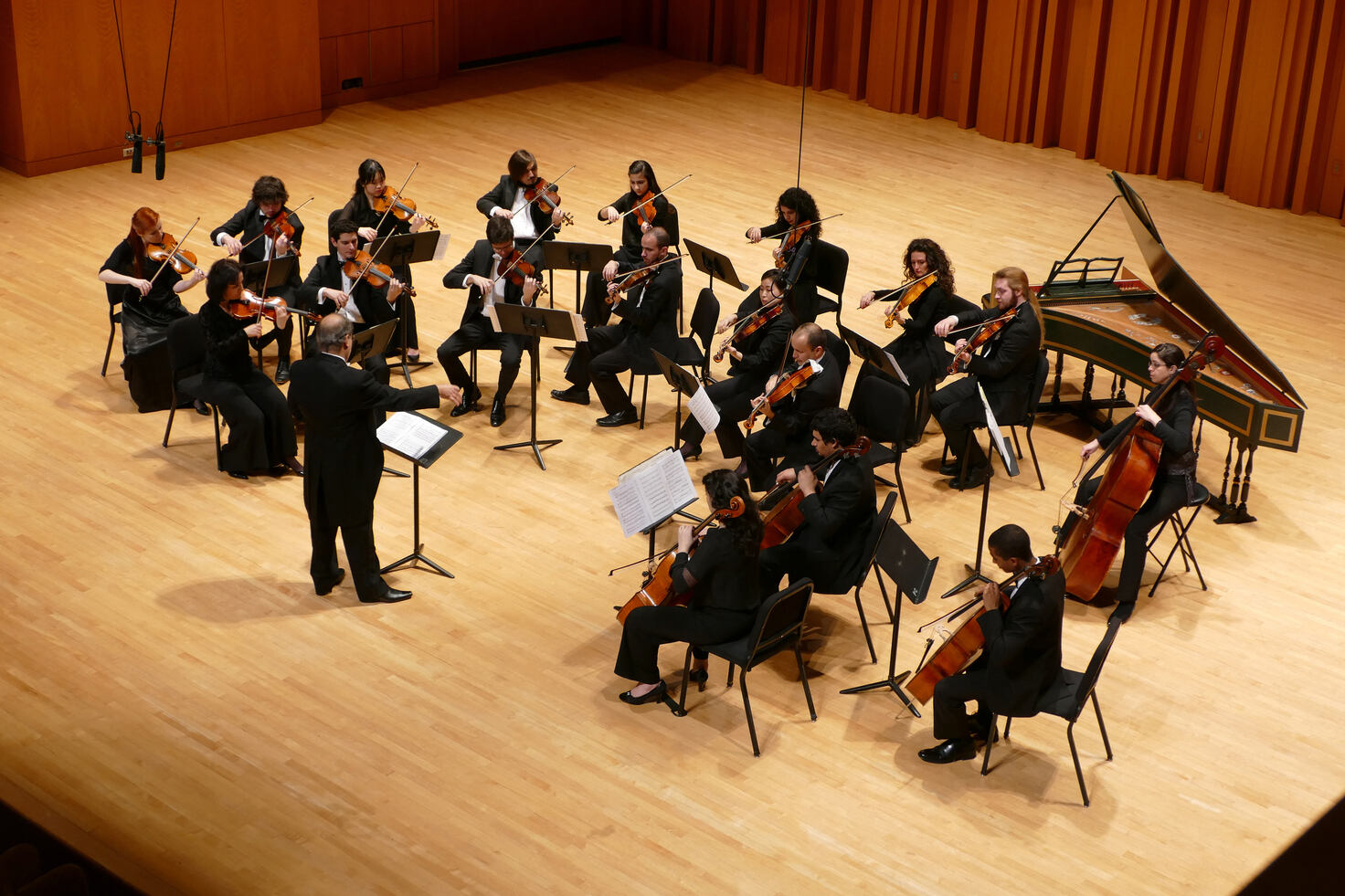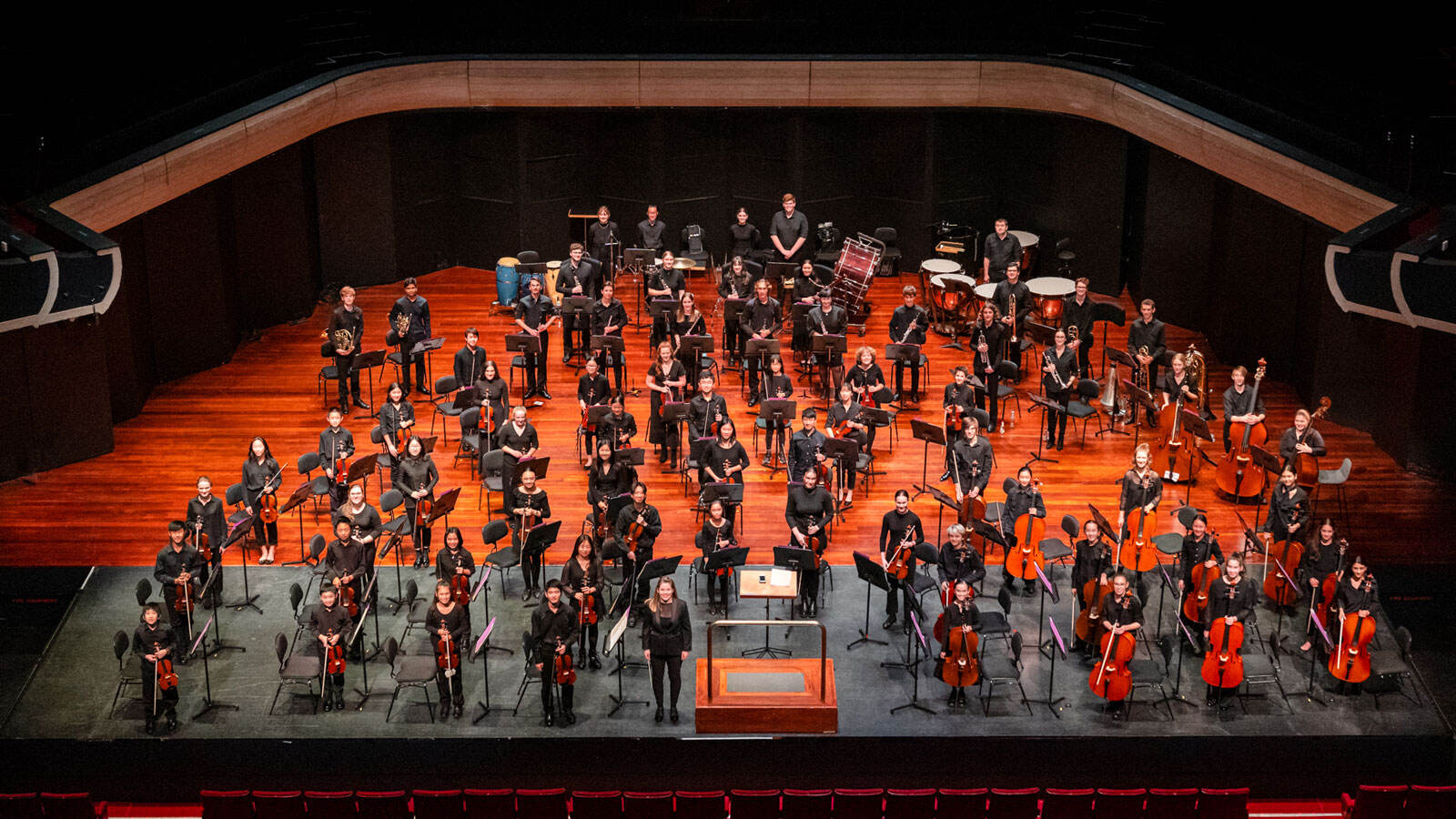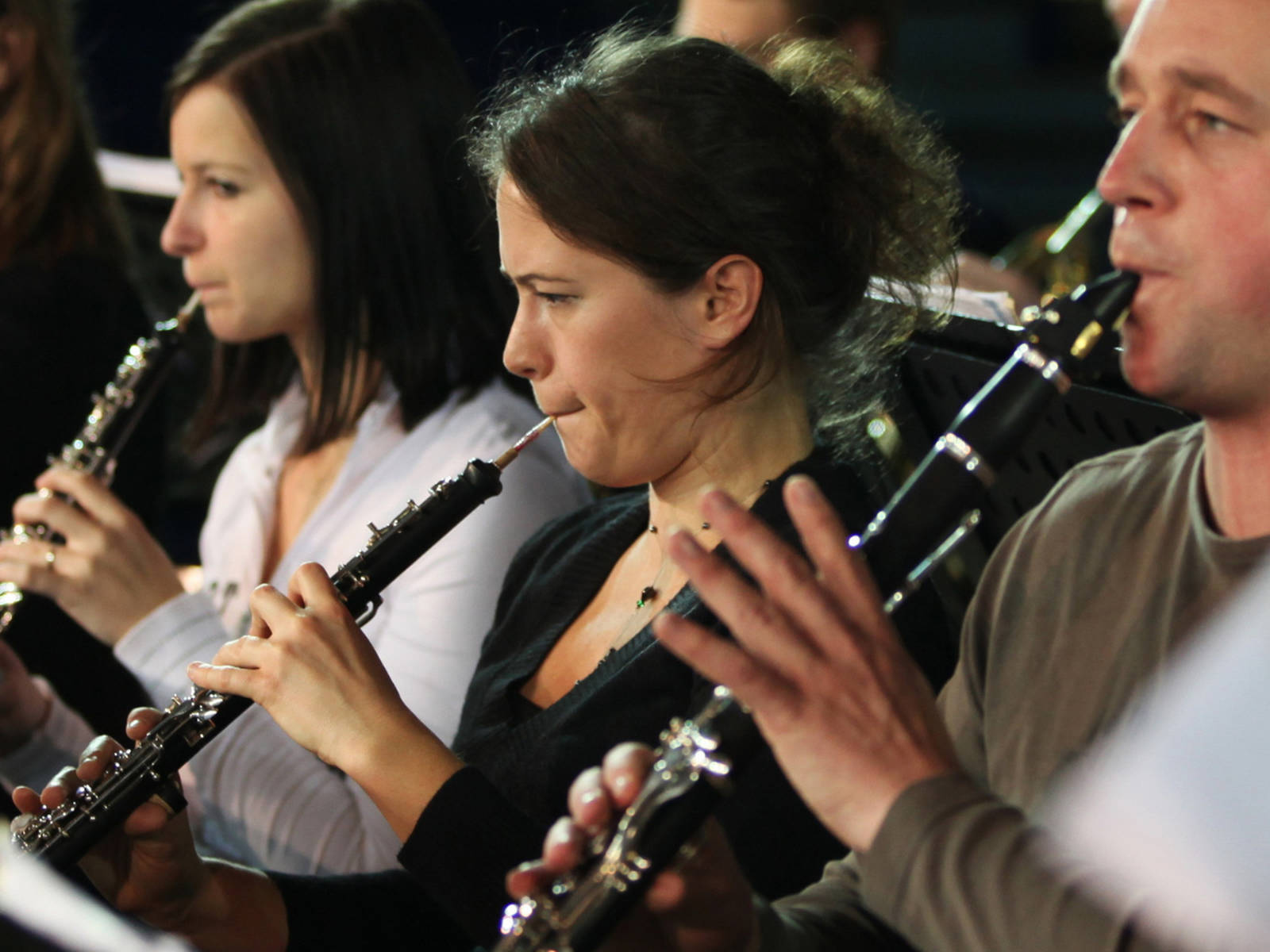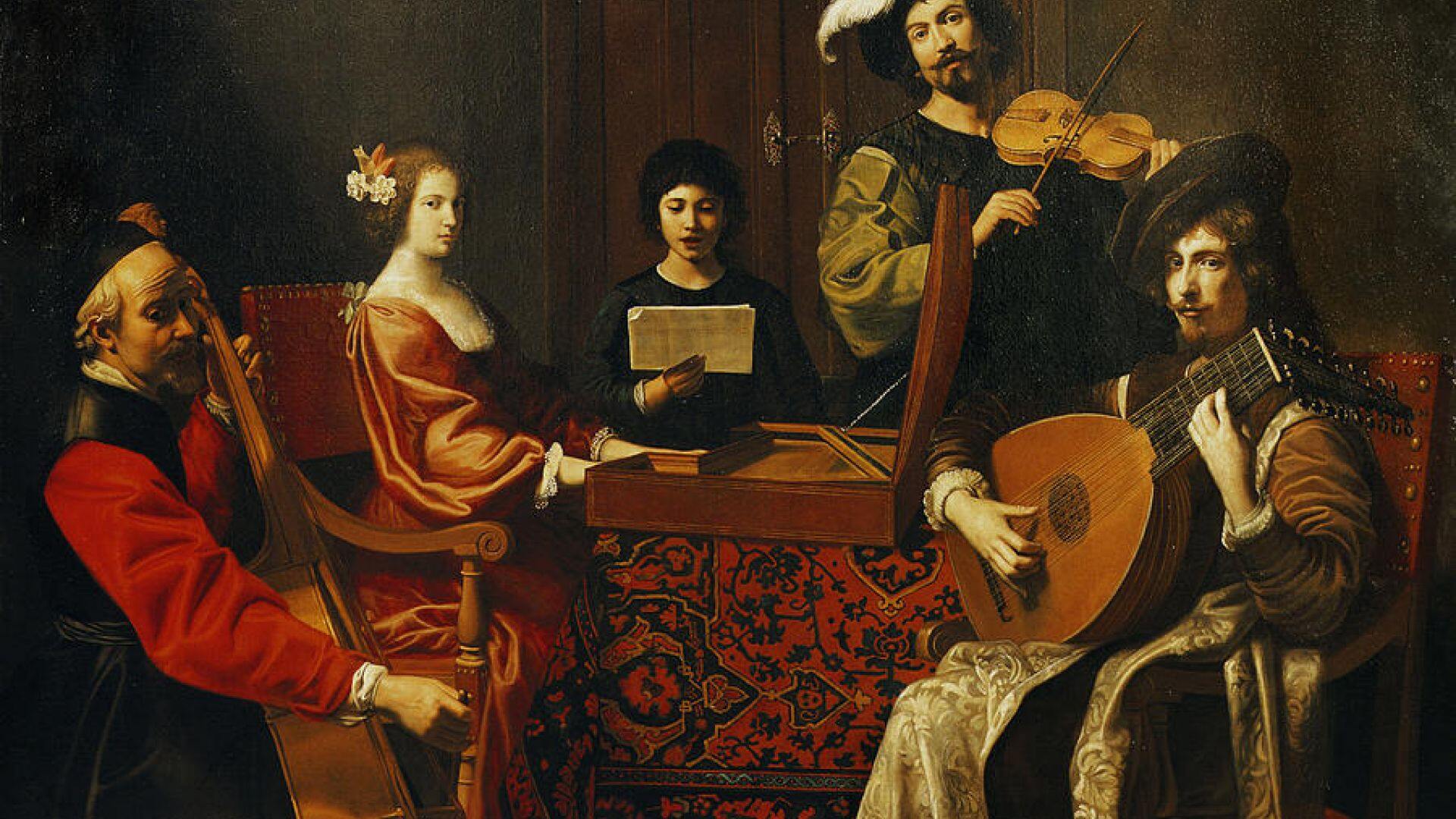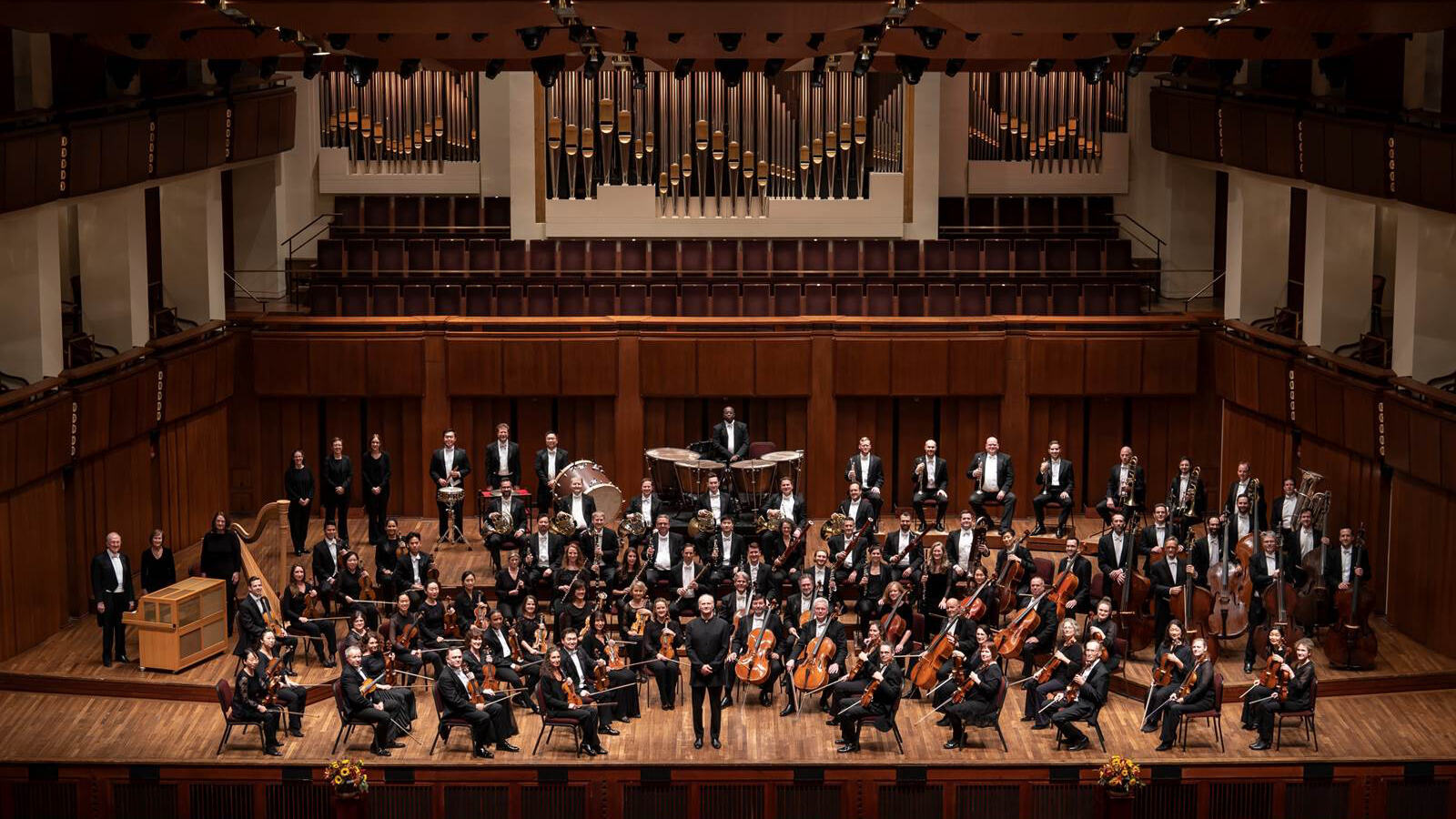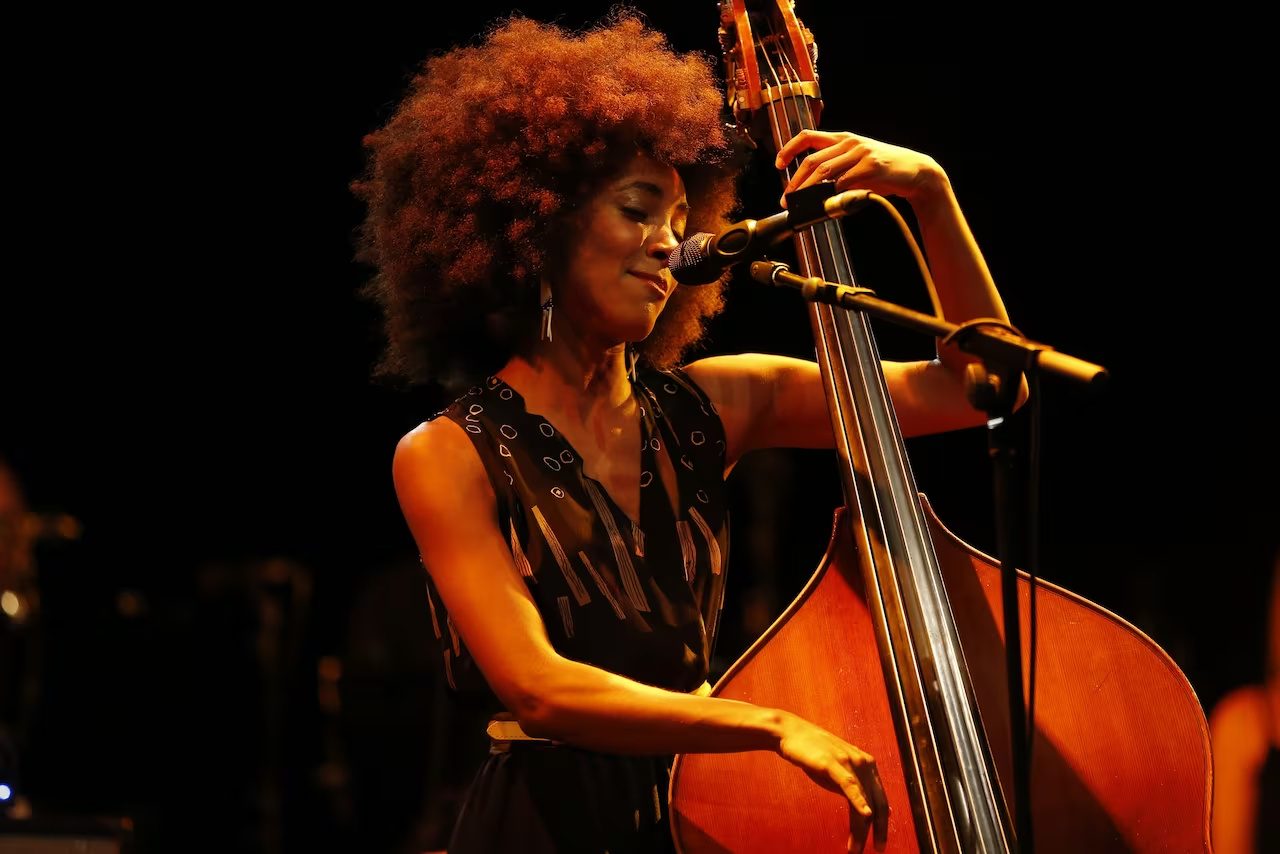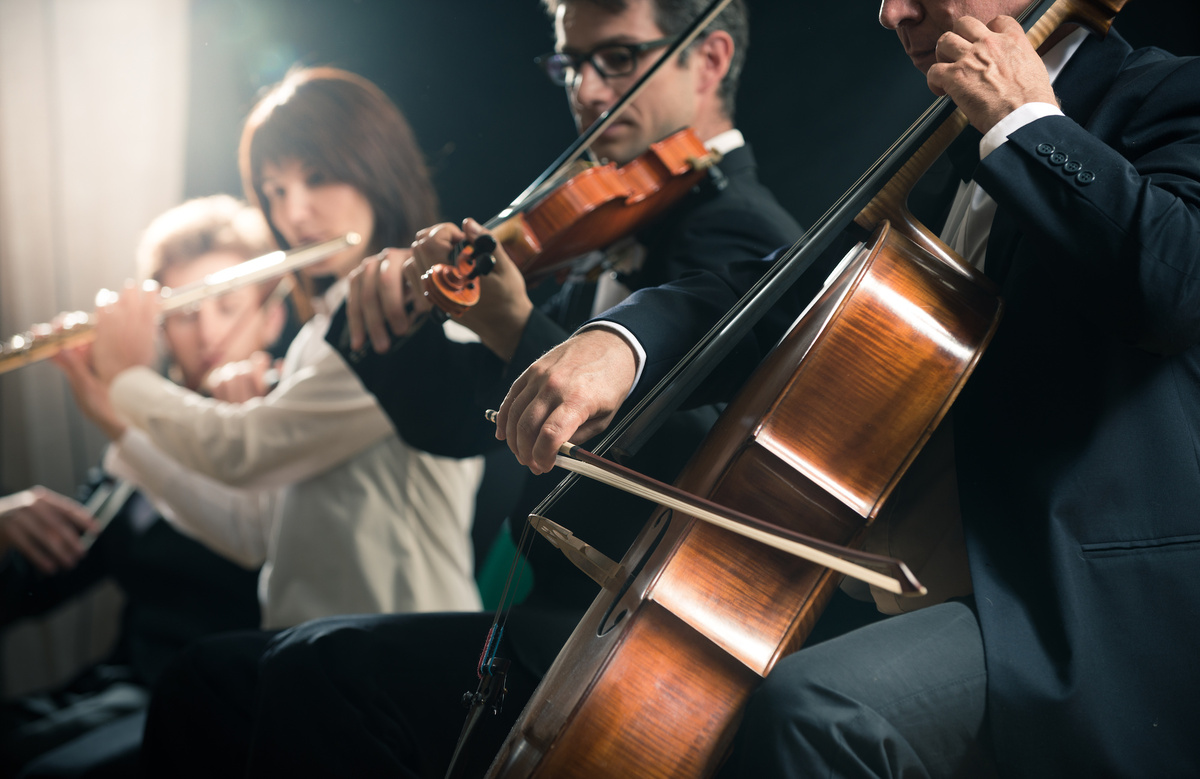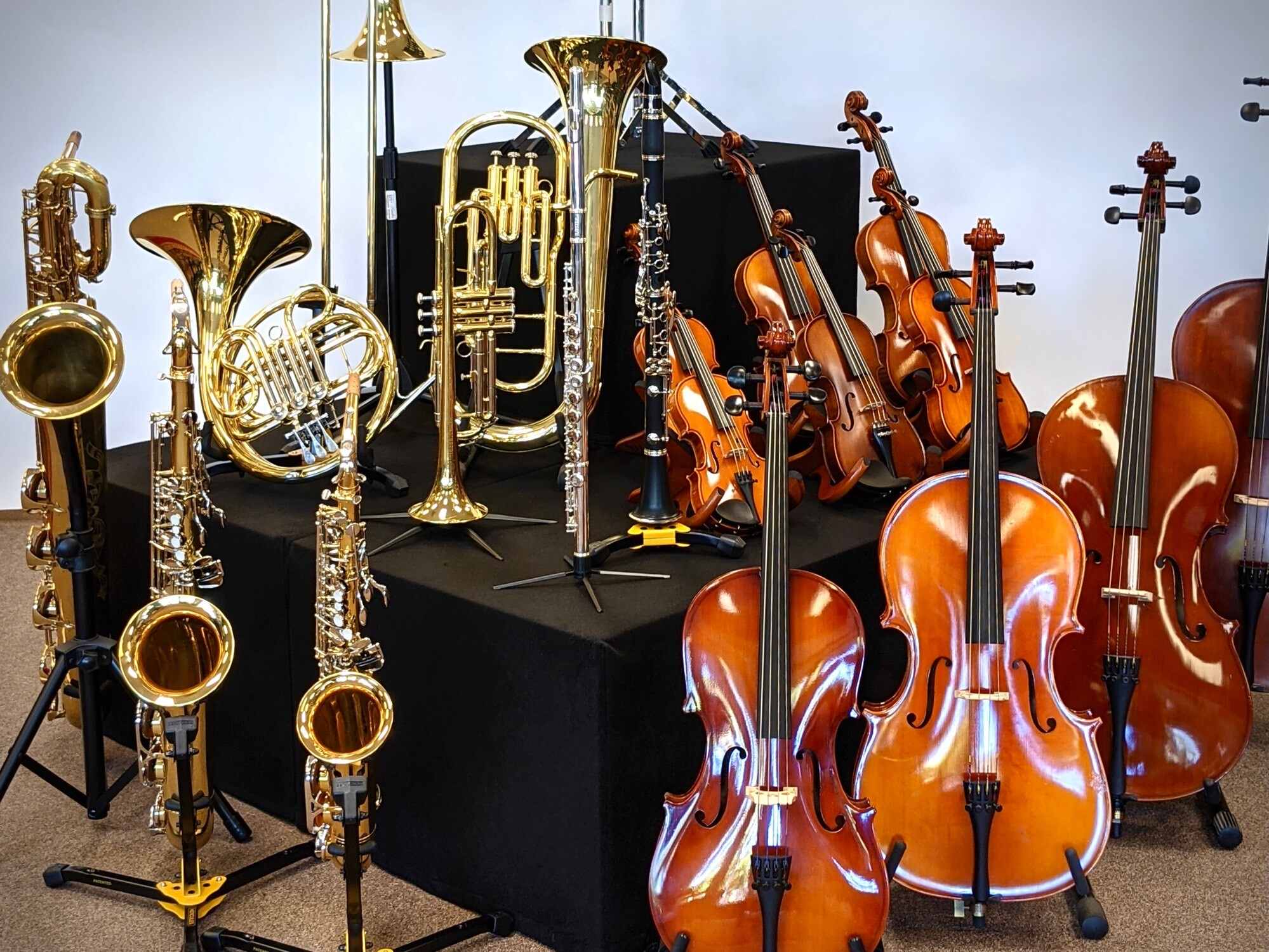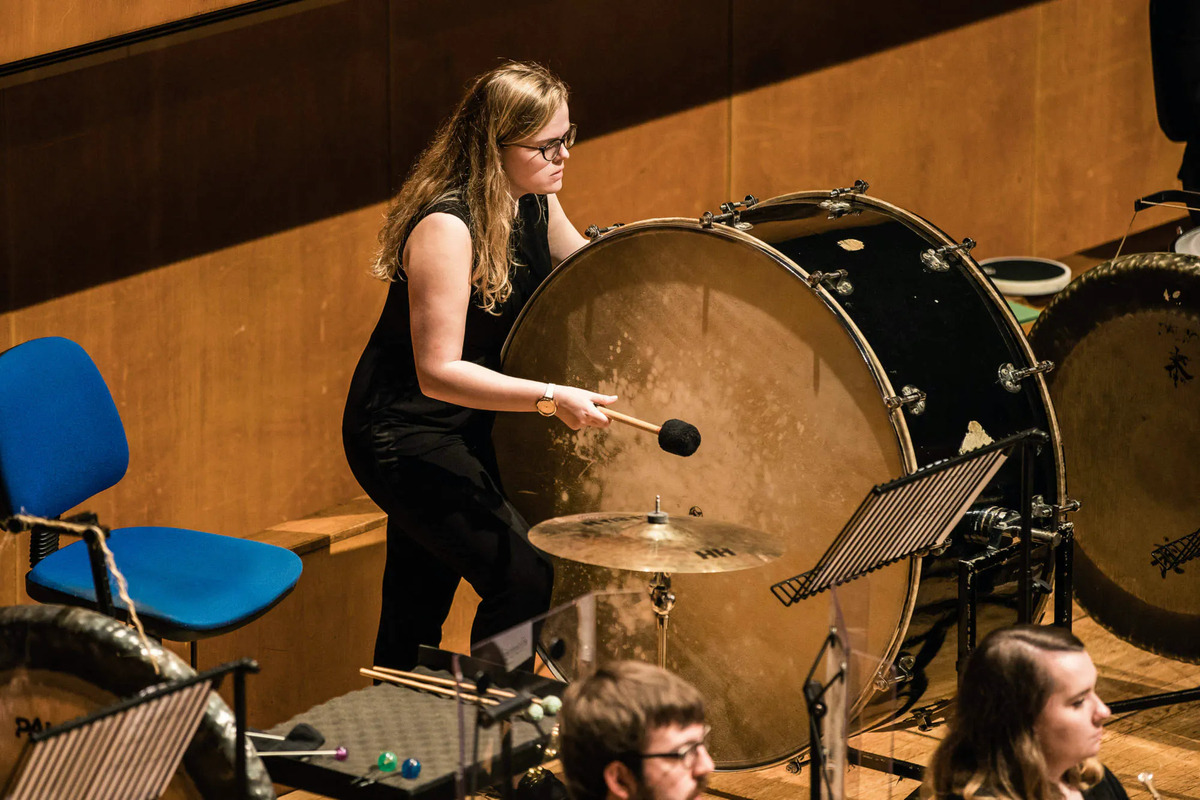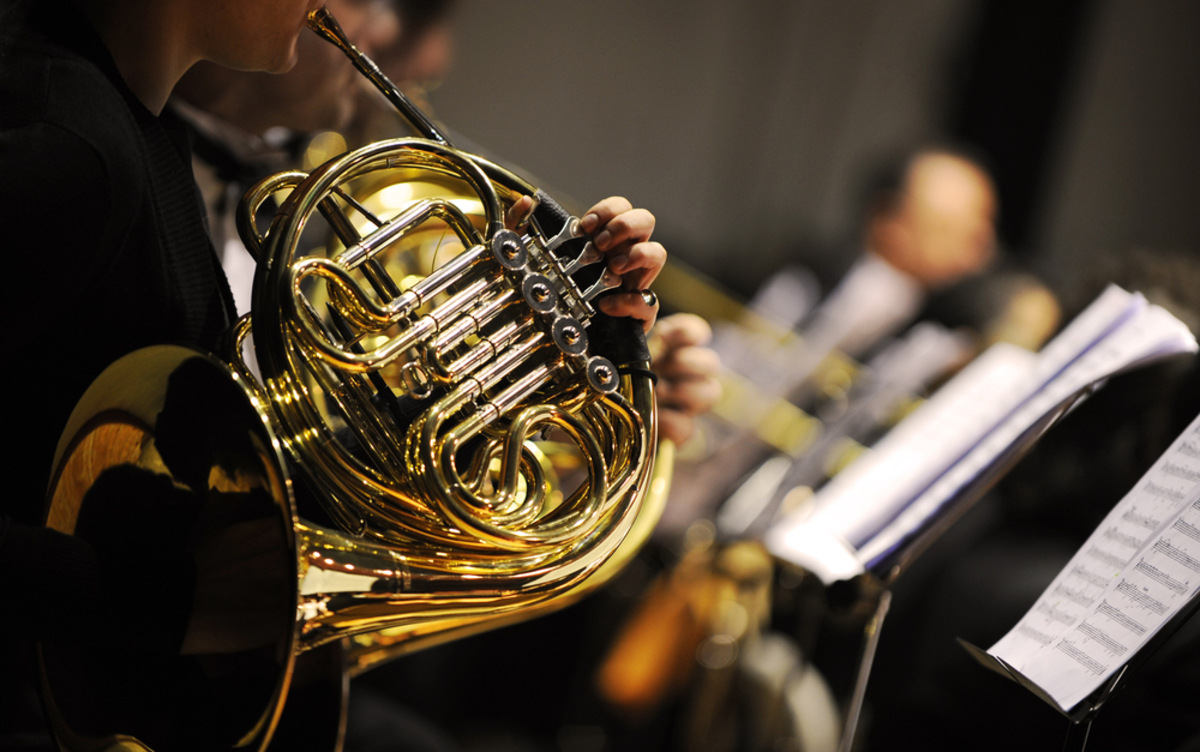Home>Production & Technology>Orchestra>What Is An Orchestra?
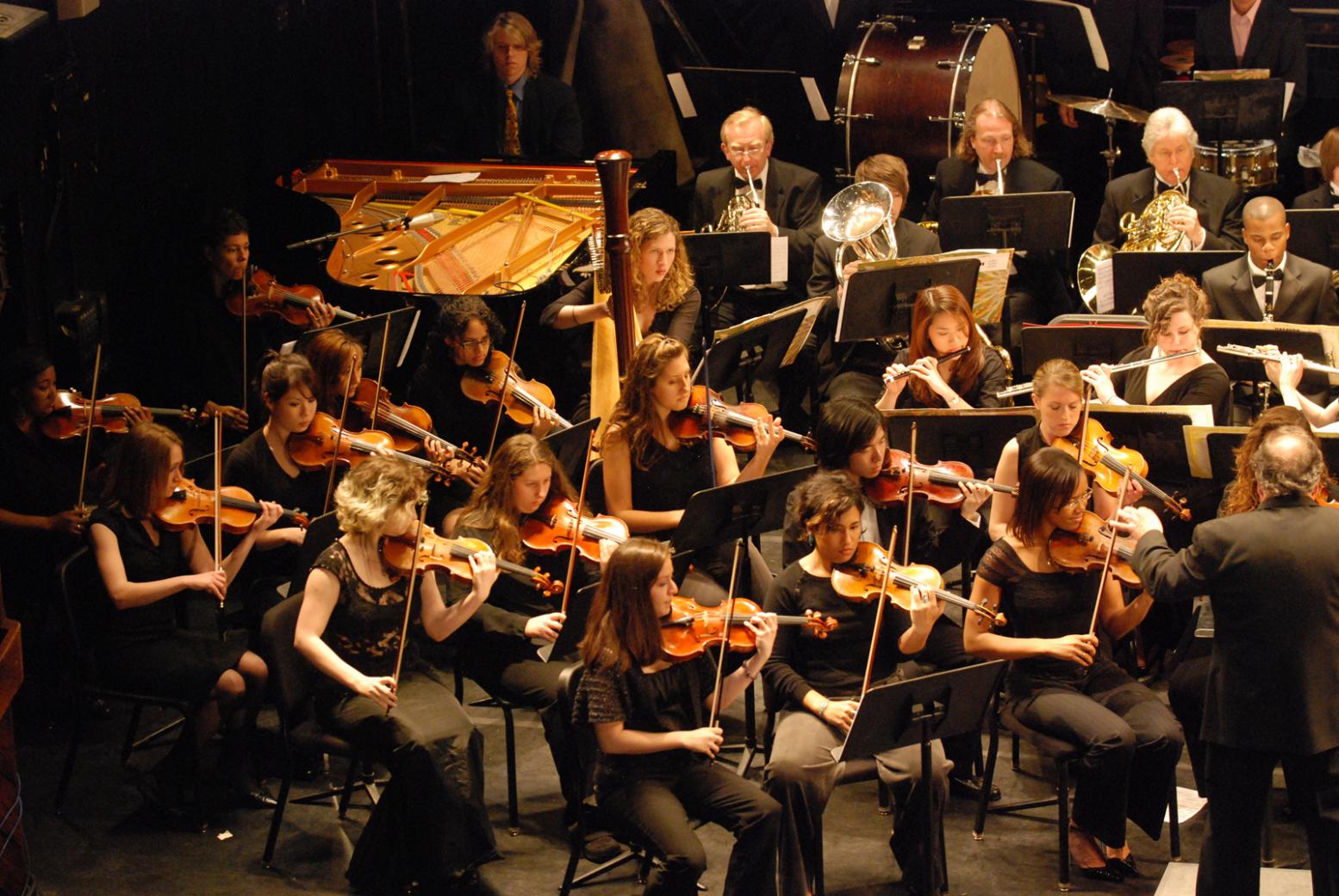

Orchestra
What Is An Orchestra?
Published: February 24, 2024
Discover the magic of an orchestra and its captivating music. Learn about the instruments, history, and the beauty of orchestral performances. Explore the world of orchestra today!
(Many of the links in this article redirect to a specific reviewed product. Your purchase of these products through affiliate links helps to generate commission for AudioLover.com, at no extra cost. Learn more)
Table of Contents
Introduction
Orchestras have long been revered as the epitome of musical excellence, captivating audiences across the globe with their harmonious symphonies. These ensembles, comprised of talented musicians, possess an unparalleled ability to evoke a myriad of emotions through their collective performances. The orchestral experience is a testament to the human capacity for creativity and collaboration, as well as a celebration of the rich tapestry of musical expression.
At its core, an orchestra represents the convergence of diverse musical talents, each contributing to a harmonious whole. The sheer magnitude of sound produced by an orchestra is awe-inspiring, transcending linguistic barriers to communicate directly with the listener's soul. From the resounding crescendos to the delicate pianissimos, orchestras possess an unparalleled capacity to transport audiences to realms of profound emotion and imagination.
The allure of orchestral music lies not only in its auditory magnificence but also in the visual spectacle of witnessing a multitude of musicians, each a virtuoso in their own right, converging to create a singular, transcendent experience. The grandeur of the orchestra is a testament to the power of human creativity, as it showcases the collective brilliance of individuals united in pursuit of a shared artistic vision.
As we delve into the world of orchestras, it becomes evident that these ensembles serve as a testament to the enduring legacy of classical music while also embracing contemporary compositions. The timeless allure of orchestral performances continues to captivate audiences of all ages, transcending cultural and generational boundaries. It is within this context that we embark on a journey to unravel the intricacies of orchestral music, exploring its historical significance, compositional nuances, and the pivotal role of conductors in shaping its transcendent melodies.
Definition of an Orchestra
An orchestra is a grand assemblage of highly skilled musicians, each proficient in playing a specific musical instrument, collectively working in unison to produce symphonic masterpieces. This collaborative ensemble typically comprises four instrumental families: strings, woodwinds, brass, and percussion. The strings section encompasses instruments such as violins, violas, cellos, and double basses, while woodwinds include flutes, clarinets, oboes, and bassoons. The brass section features trumpets, trombones, French horns, and tubas, whereas the percussion section encompasses an array of instruments, including timpani, snare drums, cymbals, and xylophones.
The hallmark of an orchestra lies in its ability to harness the individual virtuosity of musicians and merge it into a harmonious, multifaceted sound. This convergence of diverse instruments and musical talents enables orchestras to traverse a wide spectrum of musical genres, from classical symphonies to contemporary compositions. The orchestra's versatility allows it to breathe life into compositions spanning various historical periods and cultural influences, showcasing the timeless appeal and adaptability of orchestral music.
Furthermore, orchestras are often distinguished by their sheer size and complexity, with larger ensembles, such as symphony orchestras, boasting a vast array of instruments and a correspondingly rich, resonant sound. Conversely, chamber orchestras, characterized by their more intimate settings and smaller ensembles, offer a more nuanced and delicate musical experience.
In essence, an orchestra serves as a testament to the collective prowess of musicians, transcending individual performances to create a symphonic tapestry that resonates with audiences on a profound emotional level. The meticulous coordination and synchronization required to achieve such musical cohesion underscore the orchestra's status as a pinnacle of musical artistry, representing the epitome of collaborative creativity and sonic grandeur.
History of Orchestras
The history of orchestras traces back to ancient civilizations, where music played a pivotal role in religious ceremonies, communal gatherings, and theatrical performances. The roots of orchestral music can be found in the musical traditions of ancient Egypt, Greece, and Rome, where ensembles of musicians would come together to produce melodic accompaniments for various cultural events. However, it was during the Baroque and Classical periods that orchestras, in the form recognizable today, began to take shape.
The Baroque era, spanning the 17th and early 18th centuries, witnessed the emergence of orchestras in the modern sense, with composers such as Johann Sebastian Bach and George Frideric Handel pioneering the development of orchestral music. The establishment of standardized instrumental ensembles, including string, wind, and percussion sections, laid the foundation for the orchestral compositions that would define the era. The invention of new musical instruments and the refinement of existing ones further enriched the orchestral repertoire, leading to the creation of enduring masterpieces that continue to resonate with audiences today.
The Classical period, which followed the Baroque era, saw the further evolution of orchestras, marked by the rise of renowned composers such as Wolfgang Amadeus Mozart, Ludwig van Beethoven, and Joseph Haydn. These musical luminaries expanded the orchestral landscape, introducing innovative symphonic forms and pushing the boundaries of musical expression. The symphony orchestra, characterized by its standardized instrumentation and structural complexity, became the quintessential embodiment of orchestral prowess during this period.
As orchestras continued to evolve, the Romantic era ushered in an era of unprecedented orchestral grandeur, with composers such as Pyotr Ilyich Tchaikovsky and Gustav Mahler crafting symphonies of epic proportions. The late 19th and early 20th centuries witnessed the advent of modern orchestras, which embraced a diverse range of musical styles and embraced technological advancements in instrument manufacturing and acoustics.
In the contemporary era, orchestras have remained a vibrant and integral part of the musical landscape, adapting to changing cultural and artistic trends while preserving the timeless allure of orchestral music. From traditional symphony orchestras to innovative chamber ensembles and experimental electronic orchestras, the history of orchestras continues to unfold, reflecting the enduring legacy of musical excellence and the unyielding spirit of artistic innovation.
Composition of an Orchestra
An orchestra is a multifaceted ensemble comprising four primary instrumental families: strings, woodwinds, brass, and percussion. Each family contributes distinct timbres and tonal qualities, collectively weaving a rich tapestry of sound.
The strings section forms the foundation of the orchestra, with instruments such as violins, violas, cellos, and double basses. Renowned for their versatility, strings can produce a wide range of tones, from soaring melodies to resonant bass lines, adding depth and emotional resonance to orchestral compositions.
Woodwinds, including flutes, clarinets, oboes, and bassoons, introduce a diverse array of melodic and textural elements. Their agility and expressive capabilities enable them to evoke a myriad of moods, from ethereal serenity to vibrant exuberance, enriching the orchestral palette.
Brass instruments, such as trumpets, trombones, French horns, and tubas, lend orchestras their majestic and resounding qualities. Renowned for their powerful, regal timbres, brass instruments often take center stage in stirring fanfares and triumphant passages, commanding attention with their commanding presence.
The percussion section, encompassing instruments like timpani, snare drums, cymbals, and xylophones, provides rhythmic drive and dramatic impact. From thunderous crescendos to delicate rhythmic nuances, percussion instruments imbue orchestral compositions with vitality and kinetic energy, adding a dynamic dimension to the ensemble's sonic tapestry.
The combination of these instrumental families results in a meticulously balanced and sonically diverse orchestra. The interplay between sections, guided by the conductor's interpretative vision, yields a symphonic amalgamation that transcends the sum of its parts, delivering a profound and immersive musical experience.
In essence, the composition of an orchestra mirrors the intricate interplay of individual talents and instruments, culminating in a harmonious whole that embodies the collective brilliance of the ensemble. This amalgamation of diverse musical elements underscores the orchestra's status as a paragon of artistic collaboration and sonic grandeur.
Role of Conductor
At the heart of every orchestra lies the pivotal figure of the conductor, whose mastery extends beyond mere beat-keeping to encompass a multifaceted role that shapes the ensemble's performance. The conductor serves as the guiding force, interpreting the composer's vision and translating it into a cohesive musical narrative. With a mere flick of the baton and a nuanced array of gestures, the conductor wields the power to orchestrate the ensemble's dynamics, phrasing, and emotional resonance, thus sculpting a symphonic masterpiece.
The conductor's role is multifaceted, encompassing musical interpretation, leadership, and communication. As the custodian of the composer's intentions, the conductor delves deep into the intricacies of a musical score, unraveling its thematic nuances, harmonic complexities, and emotive subtleties. Through insightful interpretation, the conductor infuses the orchestra's performance with depth and authenticity, breathing life into the notes on the page and transcending them into a living, breathing musical narrative.
Furthermore, the conductor assumes the mantle of a charismatic leader, galvanizing the ensemble through unwavering vision and unwavering passion. Beyond mere time-keeping, the conductor's gestures convey a wealth of musical information, shaping the orchestra's dynamics, articulations, and expressive nuances. Their commanding presence instills a sense of unity and purpose within the ensemble, fostering a collaborative synergy that elevates the performance to extraordinary heights.
The conductor's role as a communicator is equally paramount, as they forge a profound rapport with the musicians, fostering an environment of mutual respect and artistic collaboration. Through clear and evocative gestures, the conductor conveys their interpretative insights, guiding the musicians through the ebb and flow of the music with precision and eloquence. This symbiotic exchange of musical ideas engenders a collective commitment to artistic excellence, fostering a shared sense of purpose and artistic fulfillment within the ensemble.
In essence, the role of the conductor transcends mere technical proficiency, embodying a profound amalgamation of musical scholarship, leadership acumen, and communicative prowess. Their transformative influence permeates every facet of the orchestra's performance, imbuing it with a transcendent vitality and emotional resonance. As the orchestrator of musical alchemy, the conductor stands as a paragon of artistic vision and interpretative prowess, channeling the collective brilliance of the ensemble into a symphonic odyssey that resonates with audiences on a profound emotional level.
Types of Orchestras
Orchestras encompass a diverse spectrum of ensemble configurations, each imbued with unique characteristics and artistic nuances. These variations in orchestral formations cater to a wide array of musical genres, performance settings, and artistic sensibilities, reflecting the adaptability and versatility of orchestral music. Here are the primary types of orchestras that contribute to the rich tapestry of musical expression:
-
Symphony Orchestra: Renowned for its grandeur and expansive instrumentation, the symphony orchestra stands as the epitome of orchestral prowess. Comprising a vast array of string, woodwind, brass, and percussion instruments, symphony orchestras are revered for their ability to render monumental symphonic works with unparalleled depth and sonic richness. Their performances often grace prestigious concert halls and festival stages, captivating audiences with the grandeur of classical and contemporary repertoire.
-
Chamber Orchestra: In contrast to the sprawling dimensions of symphony orchestras, chamber ensembles embrace a more intimate and nuanced approach to orchestral music. Characterized by smaller ensemble sizes, typically ranging from 15 to 50 musicians, chamber orchestras excel in rendering delicate chamber music and Baroque repertoire with exquisite precision and expressive subtlety. Their performances often unfold in intimate venues, fostering an immersive musical experience that resonates with intimacy and artistic finesse.
-
String Orchestra: Focused exclusively on string instruments, the string orchestra epitomizes the ethereal beauty and emotive depth inherent in string ensembles. Comprising violins, violas, cellos, and double basses, string orchestras evoke a sonorous tapestry of sound, showcasing the expressive capabilities and tonal richness of string instruments. Their repertoire spans a diverse range of musical styles, from classical masterpieces to contemporary compositions, offering a captivating exploration of the string ensemble's sonic potential.
-
Baroque Orchestra: Rooted in the historical performance practices of the Baroque era, Baroque orchestras specialize in authentic renditions of Baroque repertoire, employing period instruments and historically informed performance techniques. Embracing the stylistic nuances and ornate ornamentations of Baroque music, these ensembles transport audiences to the musical landscapes of the 17th and 18th centuries, breathing life into the works of renowned composers such as Bach, Handel, and Vivaldi.
-
Modern and Experimental Orchestras: Pushing the boundaries of traditional orchestral conventions, modern and experimental orchestras embrace innovative instrumentation, electronic enhancements, and avant-garde compositions. These ensembles serve as crucibles of artistic experimentation, incorporating diverse musical influences and cutting-edge technologies to redefine the boundaries of orchestral music, captivating audiences with bold sonic explorations and boundary-defying performances.
In essence, the diverse array of orchestral configurations underscores the boundless creativity and adaptability inherent in orchestral music, encompassing a myriad of ensemble types that cater to diverse artistic sensibilities and performance contexts. Each type of orchestra contributes to the kaleidoscopic landscape of orchestral music, enriching the musical tapestry with its distinct sonic identity and artistic vision.
Importance of Orchestras
Orchestras occupy a hallowed position within the cultural tapestry of humanity, wielding an enduring significance that transcends temporal and spatial boundaries. Their profound importance resonates across multiple dimensions, encompassing artistic, educational, and societal realms, thereby enriching and ennobling the human experience.
At the artistic forefront, orchestras stand as bastions of musical excellence, preserving and perpetuating the timeless legacy of classical compositions while embracing the vibrant diversity of contemporary repertoire. Their performances, characterized by transcendent beauty and emotional depth, serve as conduits for artistic expression, evoking a kaleidoscope of emotions and igniting the flames of imagination within audiences. Through their symphonic odysseys, orchestras transport listeners to realms of profound introspection and catharsis, fostering an intimate communion between the human spirit and the transformative power of music.
Furthermore, orchestras play a pivotal role in nurturing the next generation of musicians and music enthusiasts, serving as educational linchpins within communities. Their outreach initiatives, encompassing educational concerts, workshops, and mentorship programs, inspire and empower aspiring musicians, fostering a fertile ground for artistic growth and cultural enrichment. By demystifying the intricacies of orchestral music and fostering a deep appreciation for musical artistry, orchestras sow the seeds of creativity and passion within the hearts of future generations, ensuring the perpetuation of musical traditions and the cultivation of artistic excellence.
On a societal level, orchestras serve as beacons of unity and cultural cohesion, transcending linguistic, cultural, and social barriers to foster a sense of collective belonging and shared humanity. Their performances, often gracing concert halls and public spaces, weave a rich tapestry of communal experiences, forging connections that transcend the boundaries of geography and ideology. In doing so, orchestras become catalysts for social harmony, fostering a spirit of inclusivity and mutual understanding that reverberates throughout the fabric of society.
In essence, the importance of orchestras reverberates across the echelons of human existence, resonating with the transformative power of music to uplift, inspire, and unite. Their enduring legacy as custodians of artistic heritage, educational pillars, and societal unifiers underscores their indispensable role in enriching the human experience, transcending the confines of time and space to etch an indelible imprint upon the collective consciousness of humanity.
Conclusion
In conclusion, orchestras stand as veritable citadels of artistic prowess, transcending the boundaries of time and space to weave a rich tapestry of musical splendor. Their historical significance, compositional complexity, and transformative impact underscore their enduring relevance in the cultural landscape. From the grandeur of symphony orchestras to the intimate finesse of chamber ensembles, orchestras embody the collective brilliance of musicians united in pursuit of a shared artistic vision.
The orchestral experience encapsulates a profound communion between performers and audiences, fostering an immersive journey through the boundless realms of human emotion and imagination. As the resonant melodies of strings, woodwinds, brass, and percussion converge in harmonious unity, orchestras evoke a symphonic odyssey that transcends linguistic barriers, resonating with audiences on a profound emotional level.
Moreover, the role of conductors as custodians of interpretative insight and artistic vision infuses orchestral performances with depth and authenticity, shaping the ensemble's dynamics and expressive nuances. Their transformative influence permeates every facet of the orchestra's performance, imbuing it with a transcendent vitality and emotional resonance.
The diverse array of orchestral configurations, spanning symphony orchestras, chamber ensembles, and experimental orchestras, underscores the boundless creativity and adaptability inherent in orchestral music. Each type of orchestra contributes to the kaleidoscopic landscape of orchestral music, enriching the musical tapestry with its distinct sonic identity and artistic vision.
Ultimately, the enduring importance of orchestras resonates across multiple dimensions, encompassing artistic, educational, and societal realms. Their symphonic odysseys serve as conduits for artistic expression, nurturing the next generation of musicians, and fostering a spirit of inclusivity and mutual understanding within communities.
In essence, orchestras stand as living testaments to the unyielding power of music to uplift, inspire, and unite. Their timeless allure continues to captivate audiences, transcending cultural and generational boundaries, and ensuring their indelible imprint upon the collective consciousness of humanity.

